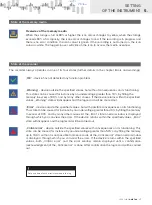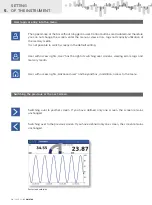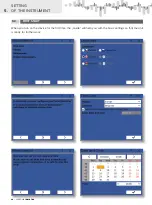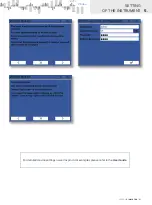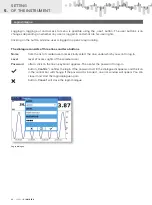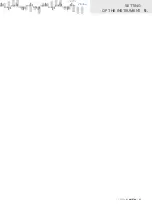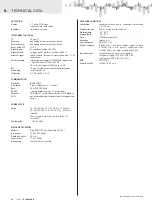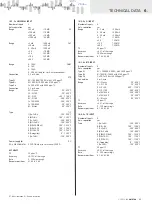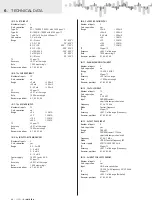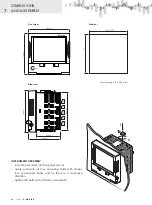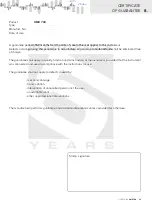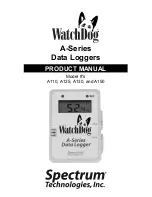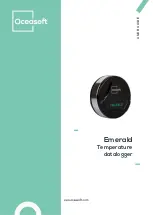
USER GUIDE
OMR 700
|
15
148.9~C
-263mm
453mV
SETTING
OF THE INSTRUMENT
5.
From the block chart it is apparent that the central point of the recorder is created by
Nodes
. They process the
measured inputs, constants, other nodes, and using the preset calculations they calculate a new value. The
calculation is kept in time by the timer. The calculated values of the nodes can be displayed on the screen and
recorded on the media. The outputs can also be equipped by them. An important feature of the nodes is the
fact that they can have a history (they remember previous values). This is an optional configuration offering the
advantage of displaying the value of the node with its history (running chart).
Timers
have an optional setting period. The client can set the period within the Rangeof 1ms up to 40 days
(by 1ms, while the dialog limits the settings to the order of ms, s, minutes, hours, and days). There are N timers
in the recorder (8 at the moment) so that it is necessary to choose a proper setting for each timer to cover
the needs of the entire recorder. The timers control calculations of the nodes and recording on the media,
while the internal mechanism guarantees that the nodes are calculated first and only then the new values are
recorded on the media.
Inputs and Outputs
provide rate, which is different for each Typee of the card and even for each register on the
card. The IO cards are in fact designed as intelligent ones = they conduct their operations in order to relieve the
main processor. They are organized into a set of registers. Some of the registers are configurable (e.g. those of
input Range), some are designated for measured values under different phases of processing. A Typeical input
card provides several values for each input – direct input value of the converter (converter bits), value converted
into electrical value (e.g. mA), and the resulting converted value (e.g. in case of weight, the strain gauge input
card recalculates the voltage of the strain gauge into weight by a preset formula - Range, tare). Similarly, it is
possible to control also the outputs. For example: You set the requested turns of a ventilator and the card will
itself, according to the preset parameters, recalculate the measured value into voltage and set it on its output.
Constants
are designated for easy and well-arRanged changes of the settings, e.g. of the required values,
filtration parameters... On one place the value can be changed, used for calculations, displayed and recorded.
Screens
are used for displaying the measured values. There are N screens and each of them can occupy up
to M different elements like running chart, bar chart, nummber indicator, finger measuring indicator... You set
the element Typee, size, location, number of displayed values, color, Range... So you can build very diverse
screens. The redraw period is set in such a manner that it enables a smooth and fast enough drawing, which,
at the same time, relieves the main processor. Some elements (as e.g. the running chart) display, besides the
current values, also their previous ones. By these elements it is therefore advantageous if the displayed node
has a history that is used for filling up the chart when switching over to the screen.
Records
serve for recording values on the media. To each record you can assign a name, frequency, file format,
number of records in the file, where you want to record, and, of course, what you want to record. All records
can be viewed in the record browser. They can also be downloaded to a PC and displayed there

















